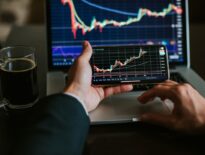Facts On Multi Sensory Exhibition
There’s no way to deny the fact that “digital artwork” is thriving. Digital Art includes original art produced digitally. on a computer without paints and canvas or any other traditional media, or a manually painted canvas that is scanned and then digitally enhanced in any of a variety of software packages (e.g. Painter, Photoshop). This term includes photographs that have been digitally enhanced to include artistic effects, as well as fractal art which is generated automatically with minimal human input. In the past, digital artists have used tools to create their digital art. But in recent years these tools have evolved and become more powerful. These tools continue to improve. It is ironic, but the improvement of the software packages is often judged by the lifelikeness of the results. The digital effect should be compared to the real-life paintbrush. The manufacturers and advocates of digital art tools could emphasise the different and unique effects that they can create, yet they actually promote the similarities to traditional media. Make a search on the following site, if you’re searching for more details concerning illusionary.
Digital artworks are undoubtedly creative. They can also be original, evocative or intriguing. But there continues to be debate and controversy over whether “digital art” is “real” art. Is the ability to manipulate software similar to a true artistic talent or skill? And shouldn’t art communicate something to the viewer? Digital art can be generated randomly, as in fractals. In this situation, how can the art be classified if there is no message being conveyed? One could argue that there’s no difference for the casual viewer when looking at two images created in a traditional way and another created digitally. But art has always been about more than a casual glance – it is about getting to the soul of the artist and understanding the message behind the painting. Even the most simplistic traditional abstract art has messages and feelings that the artist wants the viewer to understand. A digitally produced piece of art can be considered to be perfect. Just as it has been shown that the most appealing human faces have slight imperfections – so, maybe, the slight human errors on a canvas create an unconscious appeal for the viewer that is missing in digital works.
Also, it is important to differentiate between “real” and “good” artwork. Just because a painting is created with traditional media does not make it “good” art any more than Digital Art is “bad” art. Digital Art is likely to become popular in the future. Digitally creating art is a contemporary and legitimate form of artistic creation. For the digital tools and programs to work effectively, a certain level of technical ability is required. The medium has a unique set of options, which traditional media simply cannot match. It doesn’t matter if it’s a video, digital or installation image. The end result can be just as real and emotional as traditional art. The artist’s imagination and talent are still the driving force behind the art, despite the technology. Digital art tools are powerful and versatile, allowing artists to combine effects and techniques that were previously impossible using traditional media. Digital art, in short, is a creative endeavor that requires talent, creativity, and imagination. It should be recognized as an authentic form of artistic expression.



